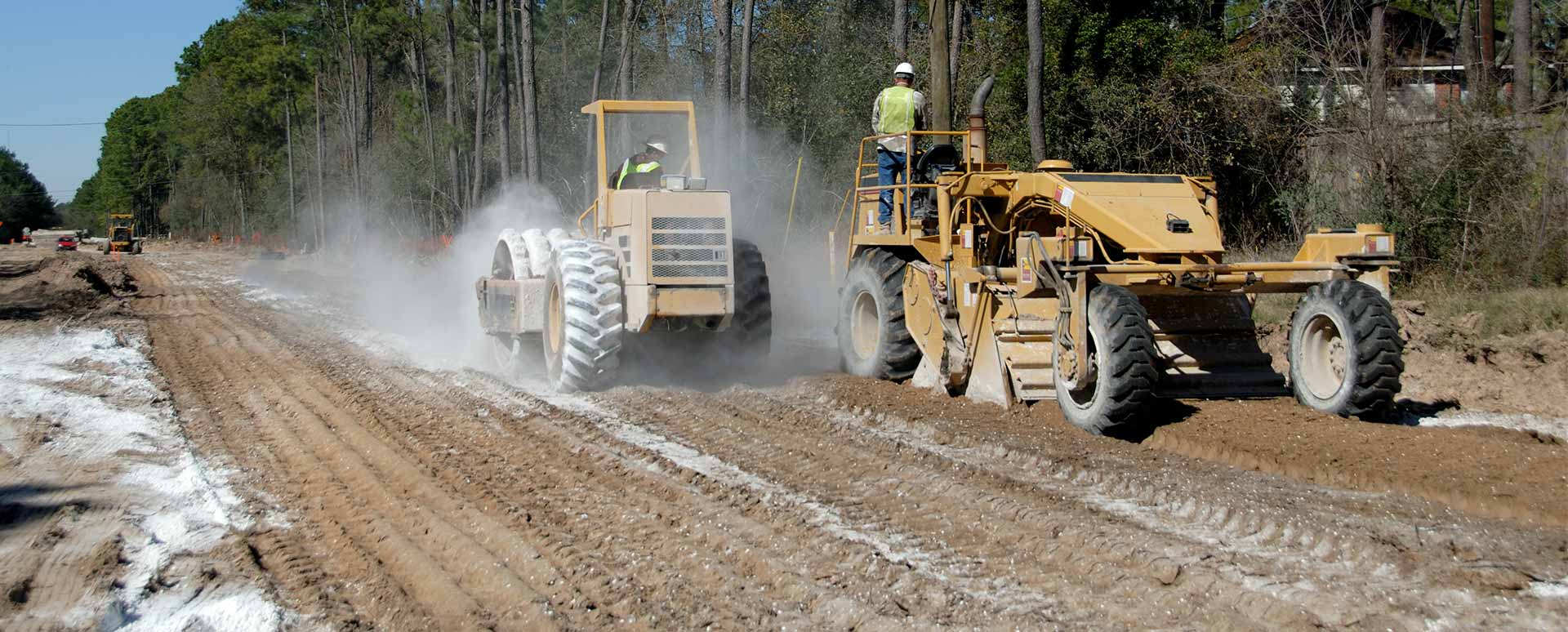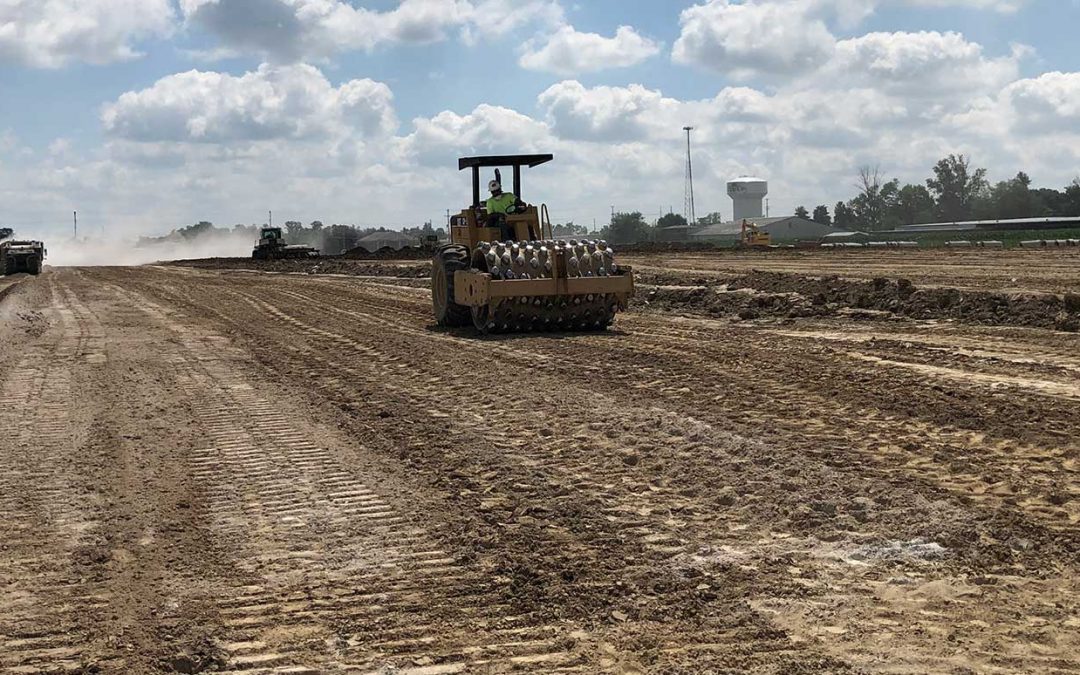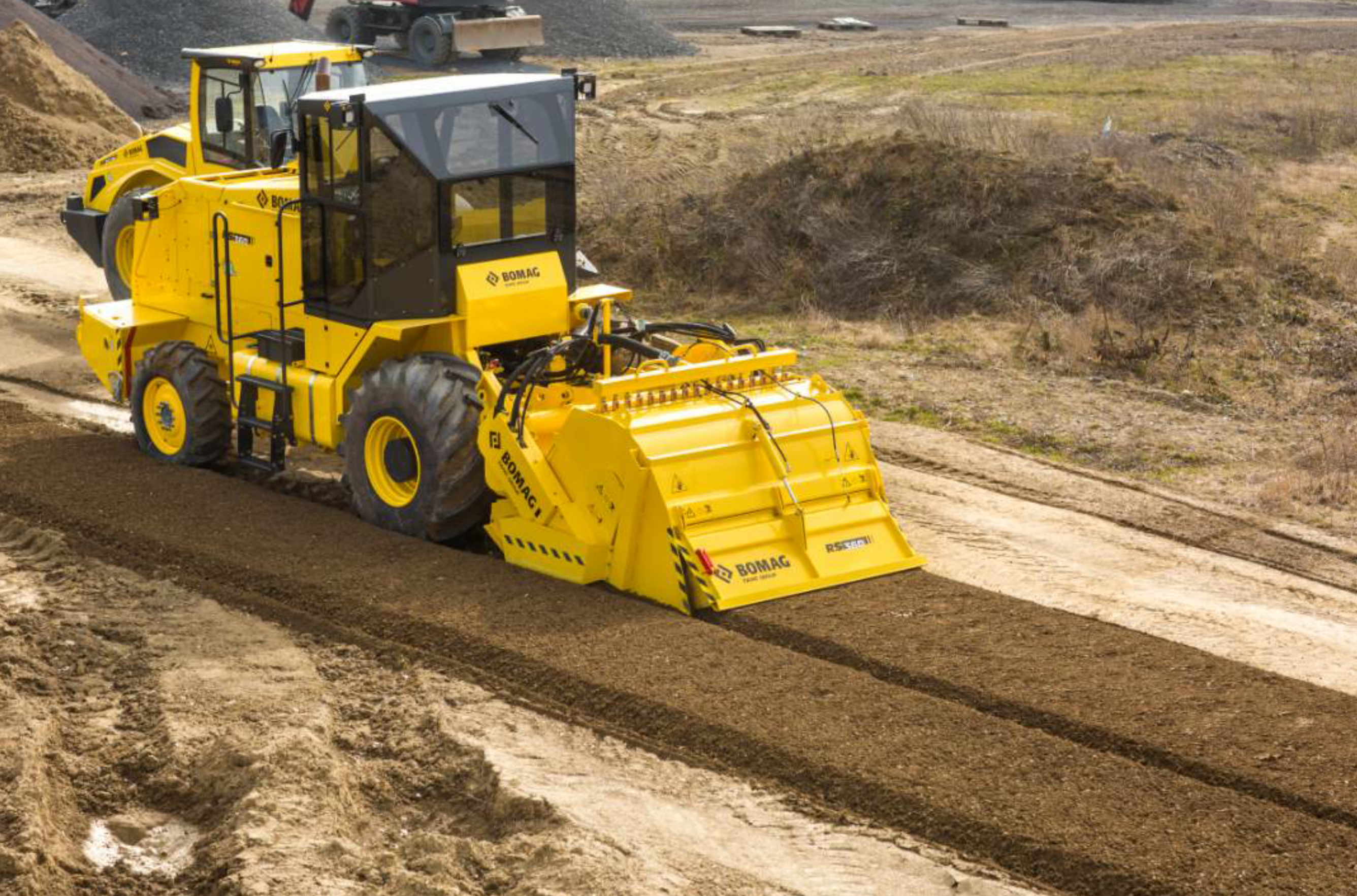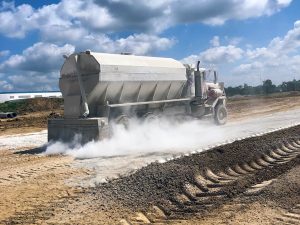A design process for lime-stabilized airfield pavement layers are described. Field compaction Summary 26 What to Look for in a Mix Design.

Utilization Of The Lime As Subgrade Stabilizer In The Pavement Construction Springerlink
Principle of Lime-Soil Stabilization.
. From residential streets to the most demanding highways and airfields lime has proven to be the best solution for solving the problems of the high plasticity clay soils and inadequate base materials. When dealing with these typesoils always recommend lime stabilization to the outside edges of the shoulders. EN16907 - Earthworks Part 1 Principles and Design.
2013 BSM Stabilisation Design1 Natural Material Charactr Grading Moisture density Mod Atterberg Limits PI ITS select active filler Step 1 150mmφ dry wet ITS select bitumen Step 2 150mmφ dry wet equil Typical Bitumen 0 1Lime 1Cem 3 reps Selected active filler-04 -02 0 02 3 reps Bit. Evaluate key soil characteristics as an initial step to determine if it is suitable for lime stabilization. Construction sites in Texas often encounter the challenge of wet.
25 Mix Design Procedures. The design lime contents determined from the criteria presented herein are for hydrated lime. REACTIONS PROPERTIES DESIGN AND CONSTRUCTION.
Use ASTM C136 10 procedures to determine the amount of soil. Determine the group classification of the lime. The design procedure which includes selection of the optimum percentage of lime rapid cure.
B A concise specification to follow for construction. If quicklime is used the design lime contents determined herein for hydrated lime should be reduced by 25 percent. With cement stabilization the blocks must be cured for four weeks after manufacturing.
And iii evaluating resistance to moisture-induced damage through a capillary suction. Quicklime however the use of quicklime for soil stabilization has increased in recent years mainly with slurrytypeapplications. This manual focuses on the subsequent construction aspects of treating soils with lime.
When lime stabilization is recommended the soil support value SSV may be raised to 35 or. Soil Stabilization With Lime Cement Anese It includes rock bolts dowels tied-back walls. Use the mix design procedure for lime stabilization to determine the percent required to stabilize the material.
Constructing lime and cement columns. Choose a lesser percentage than the percent required for stabilization. There are three key concerns when lime stabilization is applied in a construction project.
A A correct mix design completed at design phase. Volume Change 20-30 Clay Content 25-30. E For Lime Pretreatment.
Up to 10 cash back Little developed a protocol for lime mix design to soil which is based on i reactivity of soil minerals with lime. Ii establishment of optimum lime content based on the pH test and compressive strength test. Lime can be applied as pebble quicklime dry hydrated or slurry.
E For Lime Pretreatment. The optimum lime design occurs when the plot of UCS versus lime peaks. The entire process can be completed in 3 to 7 d.
The principle involved in lime-soil stabilization is the exchange of ions between lime and soil when addedWhen clayey soil is treated with lime Cation exchange takes place between them which increases plastic limit and reduces plasticity index which finally results in increase in stability of soil. APPLICATION OF THEORY INTO PRACTICE Review. Pebble Quicklime Left Dry Hydrated Lime Center and Lime Slurry Right.
New Stabilisation Standards and Guidance Steve Dunn Managing Director Geofirma Soils Engineering Ltd. Table 1 summarizes the unique benefits and drawbacks of each type. Introduction to Lime Stabilization The lime stabilization phenomena comprises complex physical processes and chemical reactions.
Lime stabilization is not a complex process and is easy to carry out. Choose a lesser percentage than the percent required for stabilization. The testing and design of stabilized soil layers is addressed elsewhere.
Figure 2 illustrates how the. Britpave Soil Stabilization. Mix the soil with chosen percentage of lime and cure for 72 hours.
Modification and Stabilization of Soils 1-6 TxDOT 092005 Base for Use in Pavement Structures Lime is formed by the decomposition of limestone at elevated temperatures. An additional 05 to 1 lime could be added to allow for variation in mixing and pavement materials. Laboratory tests and mix designs that fit the demands of the particular project and provide the most economical alternative for the planned use.
Developing a proper mix design and testing is the first step. The lime was hydrated lime manufactured by Austin White Lime Company of Austin Texas. Use the mix design procedure for lime stabilization to determine the percent required to stabilize the material.
Shows application of pebble dry and slurry lime. DESIGN AND COST DATA by Denny S. Pulverization and mixing is used to thoroughly combine the lime and soil.
When lime is combined with water and the soluble silica and alumina present in clay a chemical reaction occurs resulting in the formation of new compounds. The three soils were treated with 4 and 7 percent portland cement or hydrated lime based on the dry weight of the soil. Steps for Mixture Design and Testing for Lime Stabilized Soil Step 1 Initial Soil Evaluation Purpose.
For many years various forms of lime including products with varying degrees of purity have been utilized successfully as soil stablizing agents. These treatment levels would be expected to fully stabilize the lime-treated soils and modify the cement-treated soils. However hydrated high calcium lime Ca OH2 monohydrated dolomitic lime Ca OH2MgO calcitic quicklime CaO and dolomitic quicklime CaOMgO are.
Plasticity Index 15-18. In-place mixing is used to add the appropriate amount of lime to the soil mixing it to an appropriate depth. For over five decades lime has been utilized to improve and stabilize roadway soils throughout the state of Texas.
Known as the Lime Demand augmented by 28 day UCS testing to establish the optimum lime content. Mix the soil wit h chosen percentage of lime and cu re for 72 hours.
Soil Stabilization Lime Stabilization Servicesconcrete Of Houston

Soil Stabilization With Lime Cement Anese

Lime Vs Cement Which Soil Stabilization Method Is Better Mintek Resources

Soil Stabilization Methods And Materials Mintek Resources

Asphaltpro Magazinebase Stabilization Best Practices Asphaltpro Magazine How To Perform Base Stabilization

Soil Stabilization Importance Benefits Mintek Resources
![]()
What Is Soil Stabilization Soil Stabilization Methods Types Of Soil Stabilization

0 comments
Post a Comment